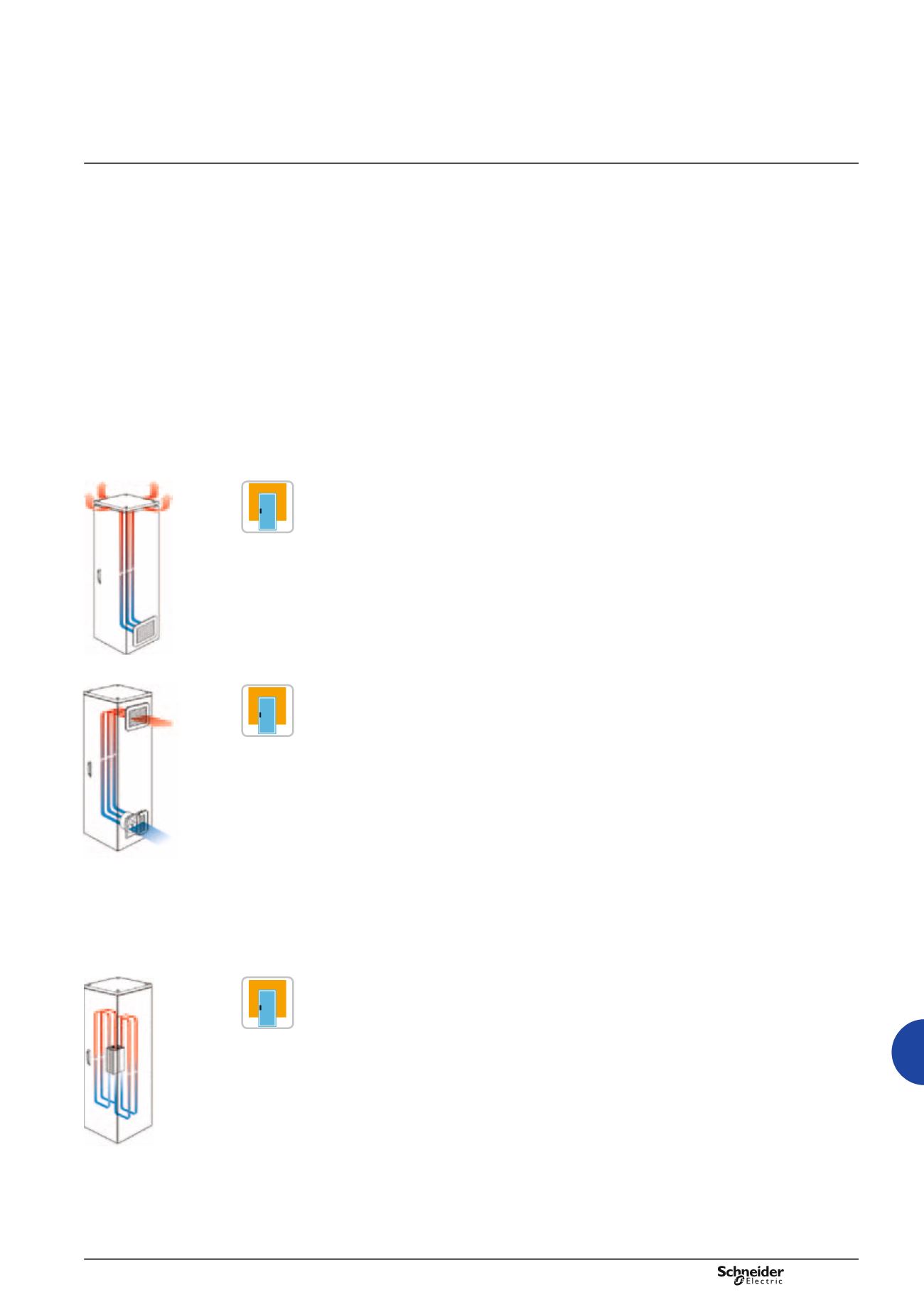

519
DB300447-20
DB300448-68
DB300452-68
DB300453-18
DB300453-18
DB300453-18
ClimaSys
Thermal management system
Thermal balance
The miniaturisation of components, the generalisation of electronics and the
appearance of new electronically powered products have made temperature
management into a need which must necessarily be considered when designing
electrical and/or electronic switchboards, in the same way as the protection rating.
Reliability and the search for lower breakdown rates are two determining factors in
process industries, where the cost per hour is extremely high. The smallest failure
can instantly result in considerable losses. The service life of the components also
depends on the temperature and humidity conditions inside the enclosure.
The ideal values are +25…+35°C for the temperature and 60 % for the relative
humidity (RH).
Various solutions to these problems have been put forward. They will be chosen
according to environmental conditions, the type of components in the electrical
switchboard, and their cost.
In certain cases, all it takes it to oversize the enclosures or use fans. In other cases,
when the temperature is higher, it becomes necessary to install air-water
exchangers or air coolers operating according to the principle of refrigeration
(cooling units). We offer you a range of solutions that adapt to every possible
scenario: from the enclosure itself to ventilation systems, resistances or exchangers,
and even cooling units.
Natural dissipation
Through the walls of the enclosure
The use of a larger enclosure can, in certain cases, solve your heating problem.
Airing
Natural ventilation
The addition of fresh air from the outside through ventilation louvres improves the
dissipation of heat by natural convection. However, this solution can only be used
to dissipate small power levels and in environments with a small amount of dust.
Ventilating
Circulation
Air circulation inside the enclosure with the help of a fan makes it possible to
guarantee an even temperature, avoiding hot spots that can damage certain
components.
Forced ventilation
The fans are designed to evacuate a considerable amount of heat coming from
the components of the electrical switchboards. The service life of the latter is
considerably extended, thus guaranteeing the long life and correct operation
of the installation.
The fans can only be used if the ambient temperature is at least 5°C lower than
the desired temperature inside the enclosure.
They offer an efficient solution, one that is easy to implement and maintain, which
is also inexpensive, to the problem of temperature increases in the electrical
switchboards. Thanks to their standard IP54 (IP55 with accessories) they are
suitable for use in industrial and tertiary sectors.
Heating
Resistance heaters
Resistance heaters can be used for two reasons:
b
b
To reheat the electrical switchboard when the ambient temperature is too low
for the correct operation of the components.
b
b
To prevent the formation of condensation.
The second phenomenon can cause short-circuits, premature oxidation of the
contacts, corrosion of metal parts and, in particular, of the enclosure, a considerable
reduction in the service life of the electrical and electronic components.
Condensation occurs when the temperature suddenly drops below the dew point
temperature. To avoid this, it is simply necessary to maintain the temperature inside
the enclosure at a few degrees above the ambient temperature of the environment.
Thanks to their design, the heaters encourage natural convection and guarantee
quick and even heating within the enclosure.


















